How Northland artist Shane Hansen found solace with art, whānau and self-care
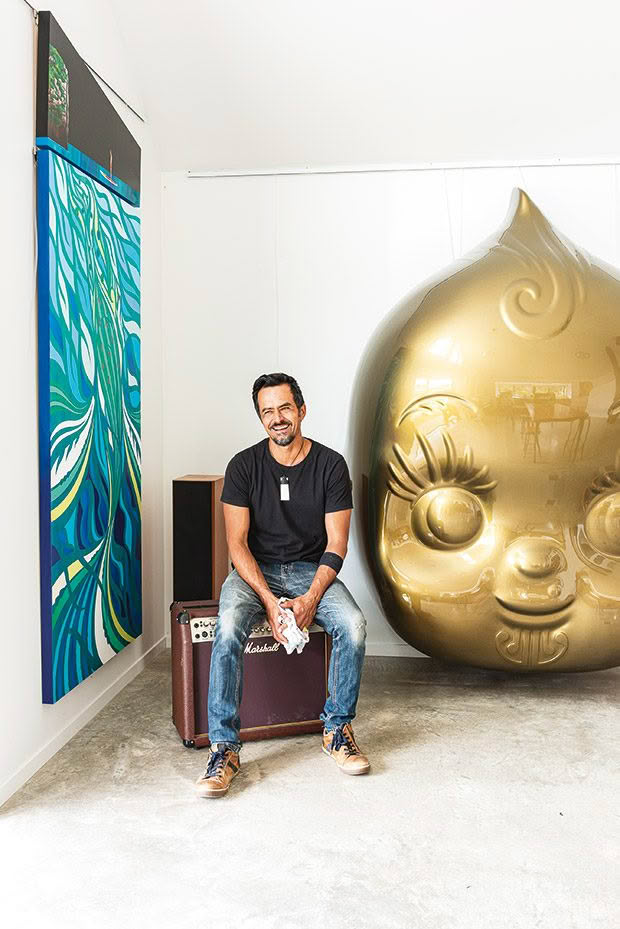
Shane’s latest project, named QT, is the start of a series inspired by his Māori whakapapa and the kewpie doll, which bears a remarkable resemblance to Shane as a baby.
Artist Shane Hansen emerged from a period of mental illness, finding peace — and a new career — in creativity.
Words: Leanne Moore Photos: Helen Bankers
Who: Shane Hansen, artist.
What: Shane is based at Tutukākā, ar, where he also works as a graphic and product designer.
Where: His work is available online and at the Exhibitions Gallery of Fine Art in Auckland and Wellington.
Q: Why did you become a professional artist?
Ten years ago, overwhelmed by depression, I discovered that art helped lift me out of the darkness. It made me feel good. It was what I needed to do.
Q: What is it about your work that gets you excited?
Creating things. Experience has taught me that having a bit of anxiety is healthy. When I get to the end of a challenging project, I feel a sense of pride and accomplishment. If a project intrigues me, I say yes even if I don’t have the experience.
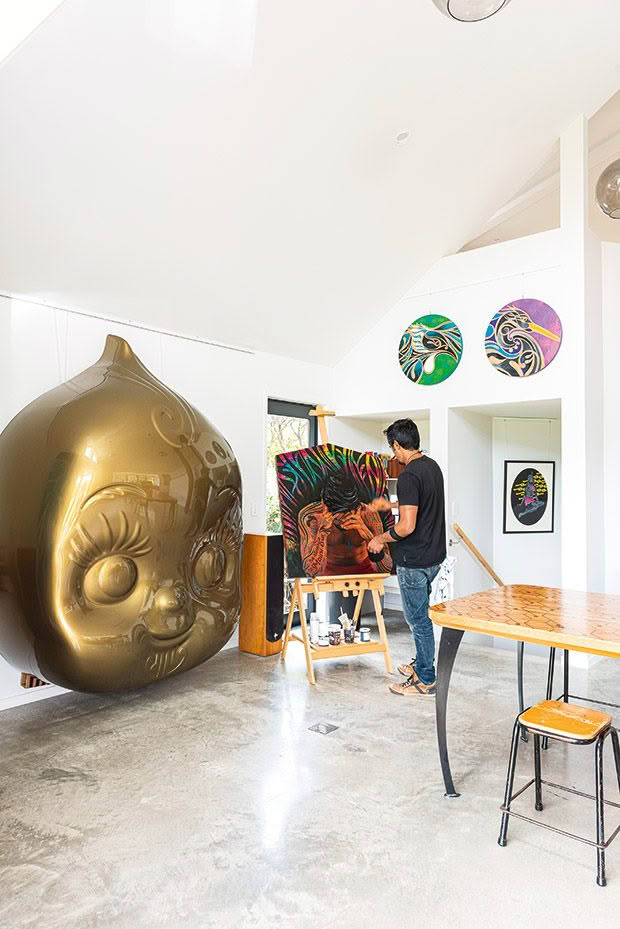
The painting on the easel, He Ātaahua Te Mauri Ora (Life is Beautiful), is a departure from Shane’s usual style. Painting the self-portrait helped him through troubled times in 2018.
Then I work out how I am going to pull it off – it helps my development and evolution as an artist. Getting others excited about art is also important to me. Connecting with people through my work and sharing personal stories means a lot.
Q: What qualities do you need to start a business?
Passion and self-belief. Being obsessed with a great idea pushes me to take action and make it successful. This gives my work authenticity and truth. People pick up on that, feel elevated by it and want to come along for the ride.
Q: How did you launch yourself as a professional artist?
I’m a trained graphic and fashion designer, but I’d always dabbled in art in my spare time. My wife Kirsty and I agreed that she’d keep working while I took six months off to focus on my art. Painting every day in our garage, which acted as my first studio, felt so right. At the end of that period, an Auckland gallery exhibited the collection of work and I haven’t looked back since.
Q: Do you need to be a risk-taker?
I tend to do things on gut instinct. The risks I take are more emotional and creative, than “sell the house if it doesn’t work out”. When I get an idea in my head, and it excites me, I need to get it out. That is always a risk, but one worth taking. Launching myself as an artist in my 30s, after working for years in a creative, commercial environment, I was more equipped to make this art thing financially sustainable.
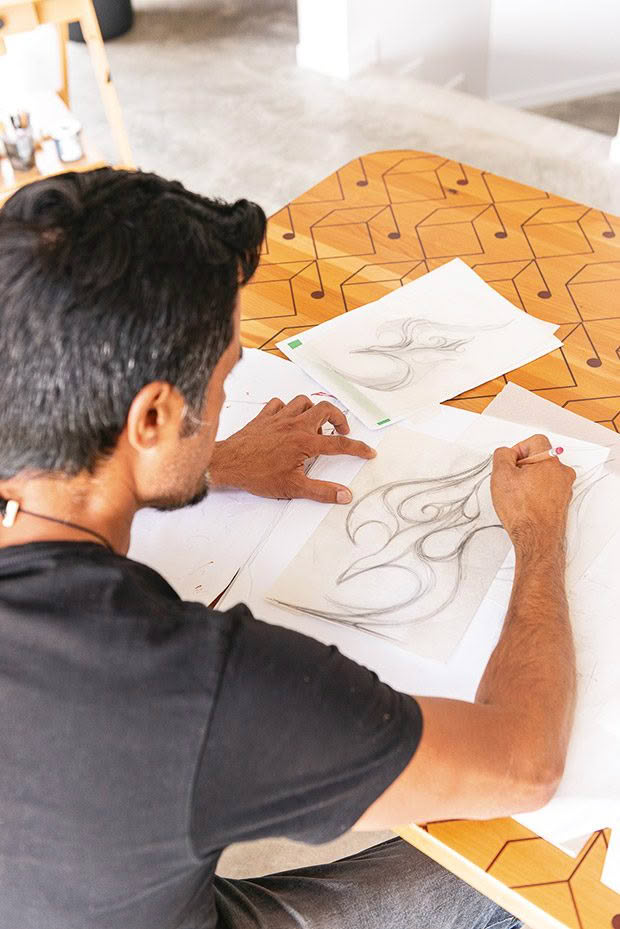
Shane is an early riser, starting each day at 6am. “That’s when I get some time to myself. I play the guitar or go for a run or a swim, and then I get into the studio.”
As an artist, you are always walking the line between working on passion projects and creating pieces that pay the bills, while retaining authenticity, originality and quality. I feel strongly about putting a value on my work that reflects the idea, time and heart I have put into it. I don’t believe in selling pieces at cost to get those red stickers at an exhibition.
Having different tiers to my business – such as originals, prints, products and licensing – helps give my artworks longevity and also provides a passive income.
Q: What was your big break?
The process of recovering from depression, with the support of loved ones and therapy, started my art journey. I was determined to make it my new lifestyle. I’ve also had great opportunities along the way; support from individuals, galleries and corporate clients all helped make it happen.
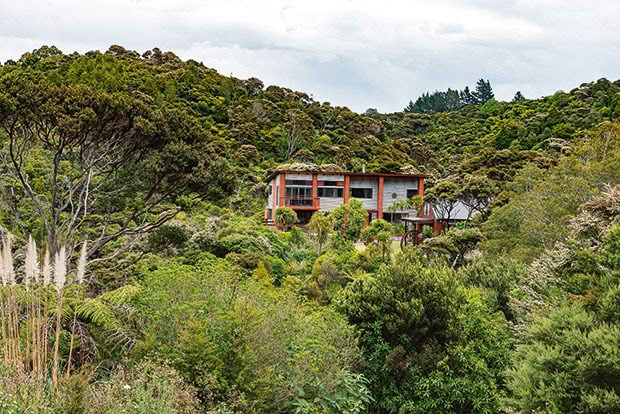
Shane appreciates the tranquillity of his home, set in native bush overlooking Tutukākā Harbour and Philip Island. “It feels like we are miles away from anyone.” Large decks, ideal for entertaining, connect the house to the lawn. “Gatherings usually involve a barbecue, sharing potluck kai such as kingfish or crayfish, nice drinks, fun conversations and relaxing music. I enjoy creating dishes influenced by my Chinese heritage. Steamed bao buns with slow-cooked pork are currently a hit with our boys. And when I say slow-cooked, that’s 15 hours, minimum.”
Q: Have you ever had a business mentor?
No. I operate in a very organic, evolving, experimental and emotive way in business. I hate the financial side and am ruled by my creative need rather than a business method.
Q: Did you have any moments of self-doubt?
I always have moments of self-doubt. When that starts creeping in, I make a concerted effort to turn it round and think positively. I’m currently working on a project that has been a major undertaking both financially (the biggest yet in my art career) and emotionally.
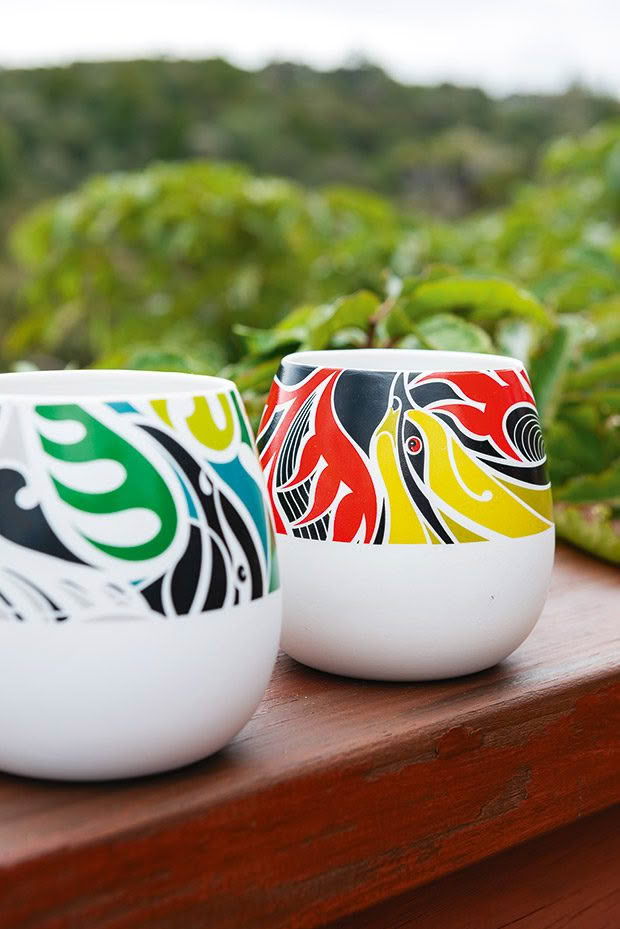
He collaborated with Jo Luping Design and Live Wires to create the ceramic wine vessels. “Products like this give artwork longevity, accessibility and diversity, as well as providing another income stream. I love these as they suit a variety of things. I have even used some as planters, gifting tōtara seedlings from our property to friends and whānau.”
There have been a few manufacturing and transport issues because of the work’s large scale. I keep reminding myself that it is worthwhile and to remember it will take time and that it’s not going to be easy. There is nothing else that brings me the same happiness and self-fulfilment – I just have to do it.
Q: What was the biggest hurdle you overcame in the early years?
Depression, low self-esteem and anxiety. This wasn’t obvious to myself or to those around me, so when I hit a wall, many friends and whānau were surprised and perplexed about it because they had always seen me as a positive, happy and confident person. Looking back, I spent a lot of time and energy masking these feelings, and it all caught up with me at once. Being open about it enabled me to turn what I was going through into a positive experience.
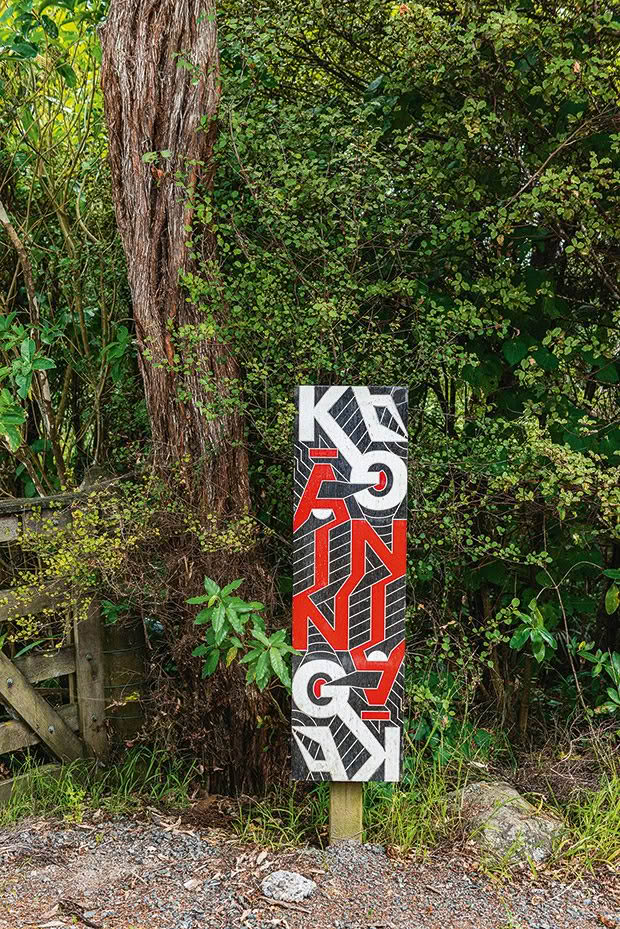
Visitors are welcomed to the family home by the kāinga (Māori village) artwork at the gateway. “I have named our house Te Kāinga. This is where I feel connected,” says Shane.
Q: Have you experienced burnout?
I’ve come close to it a couple of times earlier in my artistic career. In the past five years, particularly since moving from Auckland to Tutukākā, I have achieved a balance. Moving out of the city to a more relaxed environment is much better for my mental, physical and emotional health.
Q: You’ve talked about depression and anxiety; can you explain how you overcame your low self-esteem?
By putting myself into situations that challenge me emotionally and mentally. For example, I’m self-conscious of my physical appearance and how I measure up to others, which stopped me from doing some things in the past. I faced that fear by hosting the TV show Design Junkies and taking on public speaking. This has built up my resilience, and now I don’t worry as much about what others think.
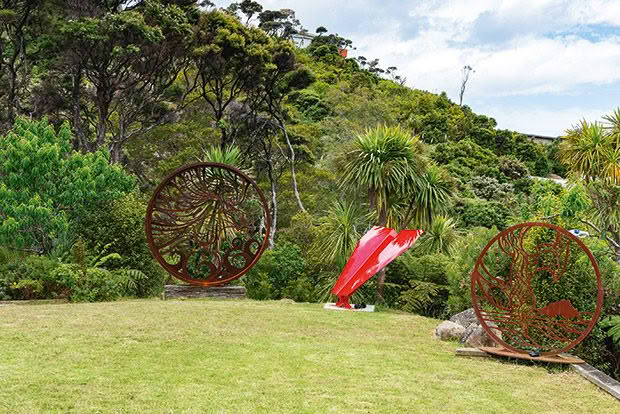
A self-taught artist, Shane’s most recent creations are large sculptural pieces, including three striking works on the front lawn.
A few years ago, I was invited to speak to more than 500 people at an event in Hong Kong, which was a first for me. This was a huge test for my confidence, and I had to lift myself to do it. I came away with a sense of self-worth and pride. I do a lot of public speaking now, and each time it has a positive impact on my self-esteem. I also think it’s important to look back at the progress I’ve made in the past decade.
Q: How do you take care of your mental health and physical wellness?
Being outdoors, taking in my surroundings, and connecting with my senses. I exercise regularly, which includes running, paddleboarding and swimming. Spending a lot of time with my whānau really helps. Taking part in community projects also makes me feel like I’m contributing and gives more meaning to what I do.
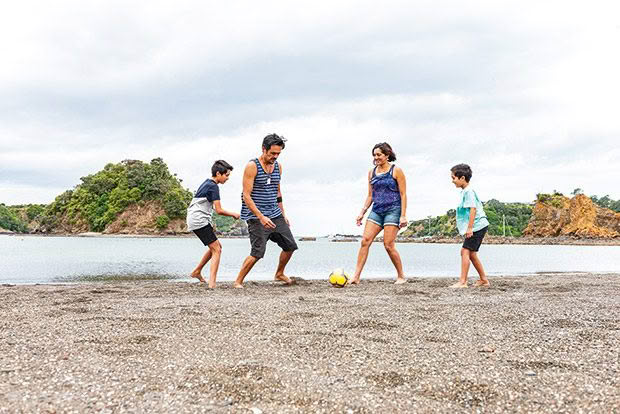
Self-care is a priority for Shane, who enjoys a kick-around at nearby Church Bay with his sons Nikau, 11, (left) and Mikaia, 8, and his wife, Kirsty. “Doing stuff with whānau helps my mental and emotional health. My boys keep me grounded and constantly remind me of how fortunate I am. I need to stay healthy for them. Kirsty is my lover and best mate. We talk a lot about everything, which always helps.”
Q: Have you ever seriously considered giving up?
Never. I have tried other jobs over the years, and nothing has fitted me as well – and probably never will.
Q: How do you define success?
By expressing myself creatively. Success is also about sharing the love of what I do with others, connecting and seeing them uplifted and excited. The spinoff is being able to support my art, lifestyle and whānau financially.
Love this story? Subscribe now!
 This article first appeared in NZ Life & Leisure Magazine.
This article first appeared in NZ Life & Leisure Magazine.
